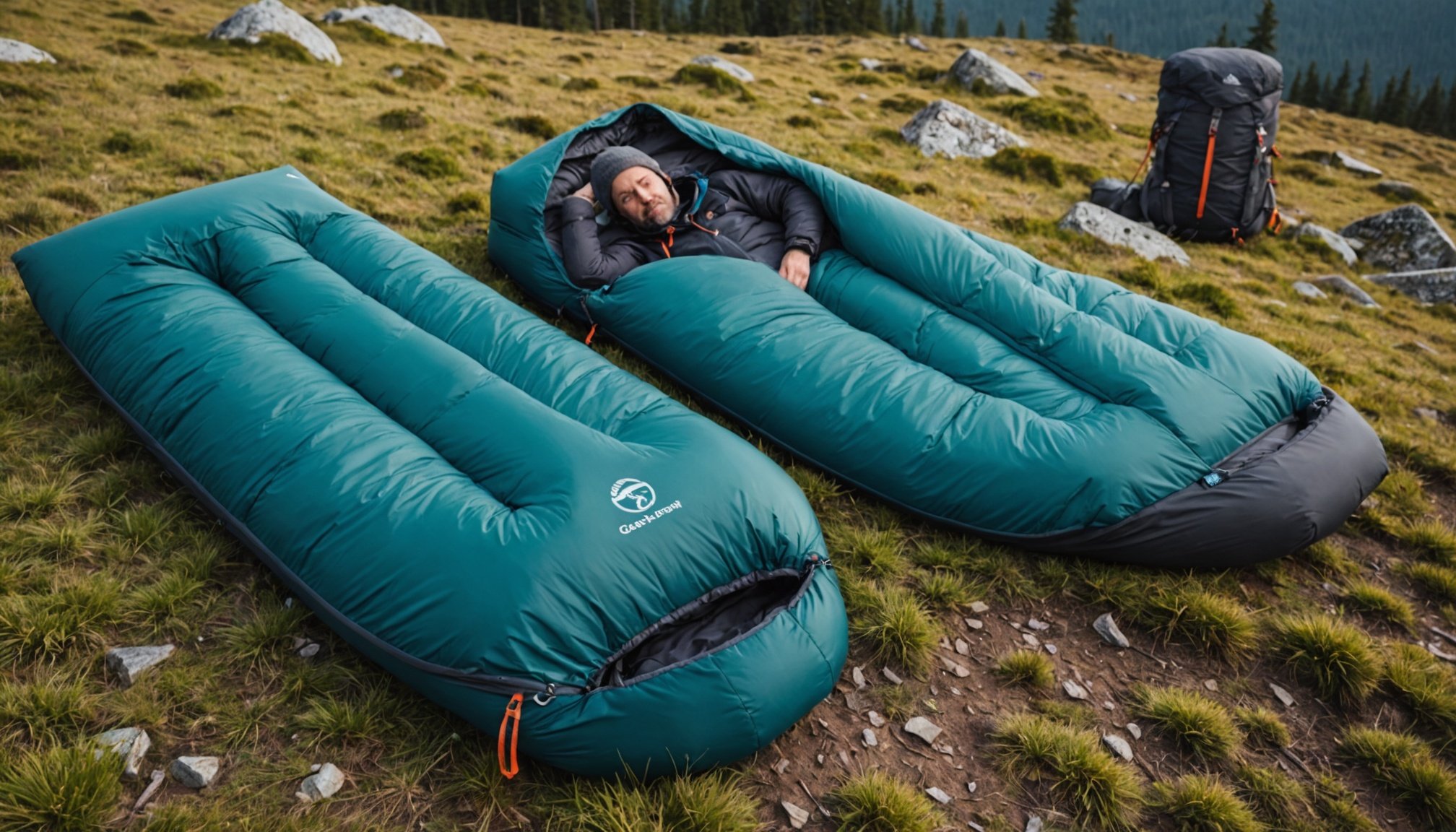Choosing the right sleeping bag can significantly enhance your camping or outdoor experience. Each trip can bring a unique set of weather conditions, and understanding how to choose a sleeping bag suitable for these variations is essential. In this article, we will guide you through the factors to consider when selecting a sleeping bag based on the weather. With the right information, you can ensure a comfortable night’s sleep, no matter the conditions outside.
Understanding Temperature Ratings
When choosing a sleeping bag, one of the most critical factors to consider is the temperature rating. Each sleeping bag is designed to keep you warm at specific temperatures, and understanding how these ratings work can help you make the best choice.
Also to see : How to navigate the best hiking trails while camping in Snowdonia?
Temperature ratings are usually indicated in degrees Fahrenheit or Celsius, providing a guideline for the lowest temperature at which the bag will keep a sleeper warm. However, it is essential to remember that these ratings can vary based on several factors, including the individual’s metabolism, clothing, and additional insulation layers.
For instance, if you tend to feel cold easily, you might want to opt for a sleeping bag rated for temperatures lower than what you expect. Conversely, if you are a warm sleeper, a bag rated for slightly higher temperatures could suffice. Additionally, consider the conditions you might encounter. If you are camping in a location where temperatures can dip unexpectedly, it might be wise to invest in a sleeping bag with a lower temperature rating than your planned excursion would typically require.
Also to discover : How to keep your campsite tidy and organized during your stay?
Knowing the Weather Conditions
Another vital aspect of choosing the right sleeping bag is your understanding of the weather conditions you will face. Weather can be unpredictable, and knowing how to prepare for different scenarios can make a significant difference in your outdoor experience.
Before heading out, check the weather forecast for your destination. Look for details such as temperature fluctuations, potential rain, or snow. If you’re planning a trip during a transitional season like spring or fall, be prepared for sudden changes in temperature.
In rainy or humid conditions, you might want to consider a sleeping bag with water-resistant materials or a synthetic fill. Synthetic bags perform better in wet conditions compared to down bags, which can lose their insulation properties when damp. Furthermore, consider a sleeping bag with a draft collar to prevent chilly air from seeping in, especially if you’re camping in windy areas.
In cold weather, look for sleeping bags that feature additional insulation, like down or high-loft synthetic materials. These options provide better insulation without adding significant weight, allowing for easier transport.
Selecting the Right Shape and Size
The shape and size of the sleeping bag also play a crucial role in your comfort and warmth during the night. Mummy bags, rectangular bags, and semi-rectangular bags each offer unique benefits depending on the conditions you will face.
Mummy bags are designed to hug your body closely, minimizing the space for cold air to circulate. This design is perfect for colder weather, as it maximizes warmth. However, they may not be the best choice for individuals who move around a lot while sleeping or prefer more space.
Rectangular sleeping bags provide more room and greater comfort but can be less efficient in retaining heat compared to mummy bags. They often allow for movement, making them preferable for warm weather camping. Semi-rectangular bags offer a compromise between the two, providing some space while still maintaining reasonable heat retention.
Size is another important consideration. Ensure the sleeping bag fits your body snugly without being restrictive. A well-fitting sleeping bag will help trap heat, while an oversized one may allow cold air to enter, resulting in a chilly night. Additionally, make sure to consider the length; most sleeping bags come in various lengths to accommodate taller individuals.
Evaluating Insulation Types
When selecting a sleeping bag, understanding the different types of insulation is essential. The choice between down and synthetic insulation can greatly affect the bag’s performance in various weather conditions.
Down insulation is known for its superior warmth-to-weight ratio and compressibility, making it an excellent choice for cold, dry conditions. However, down loses its insulating properties when wet. If you choose a down sleeping bag, ensure it has a water-resistant shell to protect it from moisture. Down is perfect for cold weather camping when you can avoid moisture.
On the other hand, synthetic insulation is designed to mimic down but retains its insulating properties even when wet. This makes it ideal for damp or unpredictable weather conditions. Synthetic bags tend to be bulkier than down bags, but they are typically more affordable and easier to care for.
Ultimately, your choice of insulation should align with the weather conditions you anticipate. If you’re likely to encounter rain or humidity, a synthetic bag may be your best bet. However, if you’re camping in consistently cold and dry conditions, a down bag will provide the warmth and comfort you seek.
Making the Final Decision
After considering the various factors—temperature ratings, weather conditions, shape and size, as well as insulation types—it’s time to make your final decision. The right sleeping bag can significantly enhance your outdoor experience, ensuring you stay comfortable and warm throughout the night.
Before purchasing, take the time to assess your specific needs and preferences. Reflect on your typical camping scenarios and the environments you frequent. This reflection will guide you in making an informed decision that best suits your outdoor adventures.
Don’t hesitate to try out different bags. Many outdoor retailers have stores where you can test the bags for comfort and fit. Additionally, consider reading reviews and seeking recommendations from fellow campers to ensure you’re making a sound investment.
Ultimately, the goal is to find a sleeping bag that not only meets your weather condition needs but also provides comfort and ease of use. Investing in the right sleeping gear will enhance your nighttime experience, allowing you to wake up refreshed and ready for your outdoor activities.
Choosing the right sleeping bag based on weather conditions is a crucial element of outdoor preparation. By understanding temperature ratings, evaluating weather forecasts, selecting the appropriate shape and size, and considering insulation types, you can find the ideal sleeping bag for your next adventure. Remember, the right choice will lead to a more enjoyable and satisfying camping experience, allowing you to fully immerse yourself in the beauty of the great outdoors.











